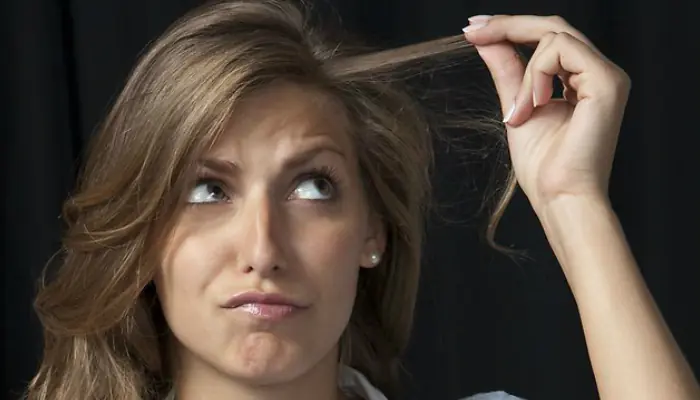
One of the sure signs of aging is the appearance of gray hair. Faced with such a problem, many people have a question: “Is it possible to return color to gray hair?” We hasten to please you: yes, it is possible. We will tell you about ways to return the color to gray hair in our article today.
Causes of gray hair
Gray hair can appear not only in old age, but also in adulthood (and younger age). The causes of early gray hair are given below:
- Poor nutrition, vitamin deficiency.
- Shock and depressive states of the body.
- Hereditary factor.
- A protracted illness that causes an increase in temperature and leads to disruption of the endocrine, digestive and cardiovascular systems.
- Sleep disturbance.
- Taking medications.
- Lack of iron, iodine, sulfur, zinc, copper in the body.
Perhaps the appearance of gray hair is due to one of the listed reasons. Try to reduce the impact of the negative factor on the body, and only then begin active steps to return your natural hair color.
Ways to return color to gray hair
Today, there are many ways to return hair to its natural color. We will talk about them below.
- Taking vitamins. To return your curls to their natural color, it is recommended to take vitamin C, A, E, group B, methionine, etc.
- Diet. The appearance of gray hair is caused by insufficient production of melanin. When the required amount of nutrients enters the body, all “frozen” processes are restored, including the production of pigment. In order to stop graying, add to your diet foods rich in manganese, cobalt, copper, tyrosine, para-aminobenzoic acid, zinc, iron, selenium, etc.
- Carrying out cosmetic procedures. In the beauty salon you can undergo various types of hair therapy that will help improve the health of your curls and return them to their natural shade. Such procedures include physiotherapy, mesotherapy and ozone therapy.
The shelves of modern cosmetic stores and pharmacies are densely lined with various miracle products that help restore your hair to its natural shade. Paints, toners, tinted shampoos, sprays, conditioners and creams allow you to cover gray hair and return your hair to a color that is as close as possible to its natural shade. You can also use medicated shampoos that do not color your hair, but promote the production of melanin (TianDe “Master Herb”, “Antisilverin”, etc.).
- Use of folk remedies. Perhaps the safest way to return your hair to its natural color is to use folk remedies.
- Decoctions of dill and burdock for rubbing into hair roots. Pour 40 g of dried dill and burdock roots into 1 liter of boiling water. After 3 hours, rub the strained infusion into the scalp. We carry out the described manipulations daily for 2 months.
- Butter. Twice a week for 3 months, rub melted butter into the roots of your hair.
- Rosehip decoction. Pour 0.1 kg of dried rose hips into a saucepan with 2 liters of boiling water. Boil the contents of the container for 5 minutes. After cooling, rub the broth into the scalp. We carry out these manipulations three times a week. The product is also useful for internal use - ½ glass twice a week.
- Mustard-sour cream mask. Stir 40 g of mustard powder into 40 g of homemade sour cream. Apply a homogeneous composition to the roots and hair. Wash off the mask after 40 minutes. We use the product twice a week for 2.5 months.
- Oil-cognac mask with honey and yolk. In a bowl with 30 ml of burdock oil, add 35 g of honey, 30 g of cognac and chicken yolk. Apply a homogeneous mixture to the scalp and strands. Let the mixture stand for 40 minutes. We use the product twice a week for 3 months.
Trichologists also recommend eating and rubbing the fruits of pears, apricots, strawberries, blackberries, cabbage, cherries and onions into the hair roots.
The appearance of gray hair is not a reason for frustration. Using the products listed above will help return your hair to its natural color and protect it from graying in the future.
Video
Early gray hair is an aesthetic phenomenon when gray hair appears at a young age: up to 25 years in Caucasians, and up to 30 years in people of the Negroid race. By about 40 years of age, hair is almost completely bleached.
Gray hair at an early age, as a rule, is not associated with general aging of the body and is a consequence of unfavorable internal and external factors that disrupt the functioning of melanocyte cells.
Not everyone delves into the root causes of early gray hair, regularly dyes their hair and forgets about the problem, while a symptom may indicate internal pathological changes in the body. Identifying the cause of early gray hair is not easy.
To do this, a person should consult a trichologist, endocrinologist, undergo a study on the level of microelements and vitamins in the hair and blood, as well as the level of thyroid hormones (see also causes of hair loss in women).
What is considered normal?
There is no specific age norm for the onset of gray hair that could be applied to all races and nationalities. In addition to the genetically determined mechanisms of aging, this process is influenced by living conditions, stress, some diseases, etc. Single hairs with altered pigmentation can be found after 30 years, most often on the temples and the front of the head. Almost complete gray hair is observed by the age of 55-60.
Brunettes and brunettes are at risk for earlier graying.
Causes of early gray hair
Graying can develop in three possible ways:
- Physiological, associated with age-related changes in the body and its natural aging (see treatment of hair loss);
- Congenital or leukotrichia, caused by a congenital lack of pigment in the hair shafts;
- Earlier, premature, which develops in young people;
Along the way, graying can be:
- complete, in which the entire hairline loses pigmentation;
- partial (individual hairs or strands turn grey);
- focal (greying in only one area).
As for the mechanism of graying, it is the same for both age and early development: the loss of melanin pigment from the hair shaft occurs. This pigment is synthesized in special cells - melanocytes, which are located in the basal layer of the epidermis, as well as in hair follicles. The cells produce pigment, and it travels from the follicles to the hair shafts.
Stimulation of melanin formation occurs under the influence of mediators of the sympathetic nervous system, pituitary hormones (ACTH, melanocyte-stimulating hormone and β-lipotropin), as well as thyroid hormones and sex hormones.
With the physiological variant of graying, melanocytes age, which produce less and less pigment.
The causes of early gray hair may be related to:
- Some diseases:
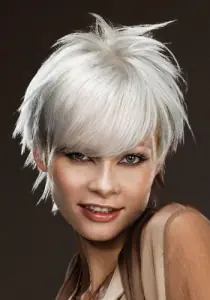
- thyroid dysfunction (autoimmune thyroiditis, hypothyroidism);
- vitiligo;
- iron deficiency anemia;
- atherosclerosis;
- Wardenburg syndrome;
- gastritis with low acidity;
- Werner's syndrome;
- Shingles.
Characteristics of gray hair
The color of the scalp for each person depends on the type of pigment:
- Eumelanin creates black or brown color;
- Pheomelanin is a red or similar shade;
- A lower concentration of pigments is typical for blondes.
Hairs lacking melanin change not only their color, but also their structure. The changes are more noticeable on dark hair than on light hair. The pigment provides elasticity and strength to the hair shaft, protects it from ultraviolet radiation and adverse environmental influences. In addition to discoloration, hair shafts become hard, split, dry, brittle and dull. They are more difficult to care for, i.e. comb and style.
Is there any point in pulling out gray hair?
Some people, in the hope of getting rid of gray hair, begin to pluck them, but this is pointless - a new, identical gray hair will grow in place of the plucked hair. Moreover, you can damage the hair follicles and develop dermatitis.
How to get rid of gray hair
It is impossible to reverse the graying mechanism, but it is quite possible to stop or slow it down. It should be noted that the problem should not be ignored by doctors and be sure to visit a therapist, endocrinologist, trichologist, who will prescribe the appropriate examination and treatment of gray hair.
How to fight gray hair and care for gray hair at home:
- Stop smoking - all heavy smokers have dull and brittle hair;
- Eat well. It is imperative that the diet includes meat, fish, vegetables and fruits;
- Be sure to get enough sleep, 8 hours a day;
- Be a physically active person. Physical inactivity is invariably associated with chronic hypoxia. And cells that do not receive enough oxygen cannot function fully, including melanocytes.
- Limit yourself from stress as much as possible. If this is not possible, take mild sedatives in traumatic situations (valerian tincture or tablets, motherwort, etc.);
- Protect the scalp and hair from temperature changes and ultraviolet radiation;
- Use high-quality cosmetic care products. Recommended products for dry, damaged hair;
- Regularly carry out self-massage of the head using special massagers or a comb with soft teeth;
- Once a week, rub a mixture of castor and burdock oil into the hair roots and leave under a warm towel for 1 hour, then rinse with shampoo;
- Instead of a rinse, you can use infusions of burdock, nettle, chamomile, and birch.
How to fight gray hair with salon treatments:
Salon treatments cannot restore natural color, but they can prevent gray hair or slow down its progression.
- Massage of the scalp. A pleasant procedure activates blood circulation, which means it improves the trophism of melanocyte cells. The procedure is carried out in beauty salons, using various nourishing oils and compositions. It is recommended to undergo 10 procedures once a quarter.
- Microelement mesotherapy, which involves intradermal injection of the scalp with microelement meso-cocktails using special syringes. The drugs are injected to a depth of 2-4 mm, allowing the delivery of useful elements to the area where the hair follicles are located. As a rule, the procedure is preceded by a spectral analysis of hair for microelements, which detects a deficiency of certain substances.
- Nourishing masks and compresses. Special formulations make it possible to restore a healthy appearance and shine to the scalp and hair, improve the structure of the hair shafts, which undergoes changes when graying, and also prepare them for coloring. Wheat germ oil, algae, natural clays, plant extracts, vitamin and microelement essences are used as components for masks (see masks for hair loss).
- Plasmolifting. For this procedure, the patient’s blood is taken, which is specially processed and purified, as a result of which plasma is released from it, without formed elements. Plasma is injected into the scalp using special syringes according to the principle of mesotherapy. It is believed that the procedure triggers the self-healing processes of skin cells, including melanocytes.
How to dye gray hair
This is perhaps the most effective way to disguise loss of hair color.
It should be noted that at least the first time you should seek help from a beauty salon specialist so that the coloring is effective. The choice of dye composition, color, exposure and frequency of dyeing is based on the following factors:
- number of gray hairs;
- hair length and structure;
- growth rate of hair shafts;
- skin type.
Sometimes before dyeing they resort to bleaching in order to achieve uniform coloring of the hair.
- With a small percentage of gray hair on the head (up to 25%), you can resort to tinting or coloring when the changed hair is dyed. The second option is highlighting or blonding, i.e. dyeing gray locks in a light color.
- When changing more than 50% of the hair, complete permanent dyeing with natural or chemical dyes is effective.
- As for the color, the darker it is, the more contrasting and noticeable the gray hair will be as the roots grow. The optimal color is golden; it does not allow gray hair to show through.
What colors really cover gray hair?
On the packaging, the manufacturer often writes “covers gray hair 100%,” but the veracity of these promises can only be verified through personal experience. Professional series of dyes or mixtures prepared by hairdressers in beauty salons, as well as special lines for gray hair from well-known brands (for example, Estelle, Matrix), are considered good. To improve the durability and strength of paint, it is recommended to add 6% professional oxidant to it.
As a rule, good and professional paints are very expensive, and you will have to use them regularly, which not everyone can afford. You can use cheap natural dyes that are safe for frequent use and easy on your wallet.
- To obtain a dark chestnut color, basma and henna are mixed in equal proportions, diluted with water to the consistency of sour cream and applied to the scalp for half an hour. The roots should be painted especially carefully. The paint is washed off with warm water.
- To obtain a soft, natural black color, mix 2 parts basma and 1 part henna, prepare the mixture according to the algorithm above.
It is easier for men to hide gray hair - just have a short haircut without focusing on problem areas of the hair. Women can use asymmetrical and multi-layered haircuts, and arrange their strands so that gray hair is hidden under normal hair.
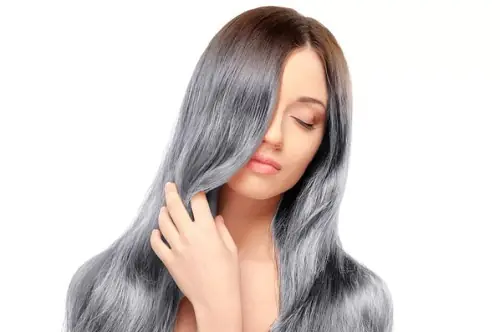
Graying is a natural consequence of age-related changes; people usually begin to notice gray strands at the age of about 40 years. For fair-haired people, gray hair appears a little earlier, for dark-haired people - a little later. However, quite a lot of people find their first gray hairs at the age of 25, and this makes them concerned about the problem of restoring their hair color.
Why does hair turn grey?
Hair loses its coloring pigment as a result of severe psychological shocks, chronic stress, health problems, due to alcohol abuse, taking certain medications, and after surgical anesthesia. Gray hair is also caused by disturbances in the functioning of internal organs, for example, dysfunction of the thyroid gland, and an unbalanced diet, from which the body begins to experience a deficiency of many important microelements, such as copper and zinc. A genetic predisposition cannot be ruled out, which is often cited as the cause of platinum hair.
Melanin, a pigment produced by melanocyte cells located in the hair follicles, is responsible for hair color. The decrease in melanocyte activity with age explains why hair turns grey. To stop premature graying, it is necessary to resume biological processes in the hair follicles.
Methods to combat early gray hair
Hair deprived of pigment becomes coarse and stands out noticeably against the background of the natural color, in addition, it visually adds extra years to the owner. Unfortunately, there is no radical way to restore the natural color of pigment-deprived hair, but further graying can be prevented.
Cosmetical tools
Professional dyes will help hide gray hair, however, they all contain chemical components that weaken and damage the hair structure. After 3-4 weeks, the curls will have to be tinted, because the roots begin to grow.
If there is not much gray hair, a tinted balm or shampoo can help, which should match the natural color of the hair.
Among the cosmetics we can highlight:
- tint shampoos;
- air conditioners;
- cream;
- spray toners.
Vitamins
If the cause of premature graying lies in a lack of vitamins and microelements, you can stop further discoloration by taking multivitamin hair complexes. For example, the ALERANA® line contains a vitamin-mineral complex containing 18 active components, including vitamins B12, C and E, and beta-carotene, which affect melanin synthesis. At the same time, the complex improves the condition of the hair and scalp and reduces hair loss.
Diet
Amino acids such as tyrosine and tryptophan are involved in the formation of melanin. To activate pigment production in the body, you should eat more foods rich in these amino acids. Tyrosine is found, for example, in foods such as liver, meat, fish, seafood, beans, almonds, and avocados. Sources of tryptophan are brown rice and dates. Both acids are present in large quantities in peanuts and bananas.
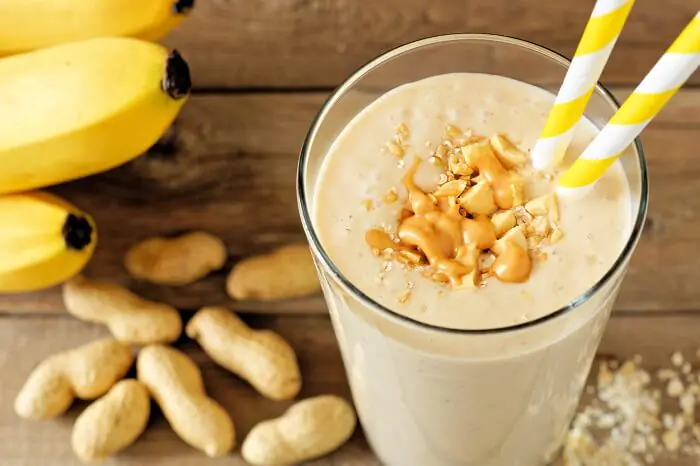
For the production of melanin, carotene, vitamins C, E, A, which are found in cereals and cereals, are needed. There is a lot of carotene in orange-colored vegetables and fruits (peaches, melon, etc.). An important role in the synthesis of melanin is played by vitamin B10, which is present in cereals and cereals, and in wholemeal bread.
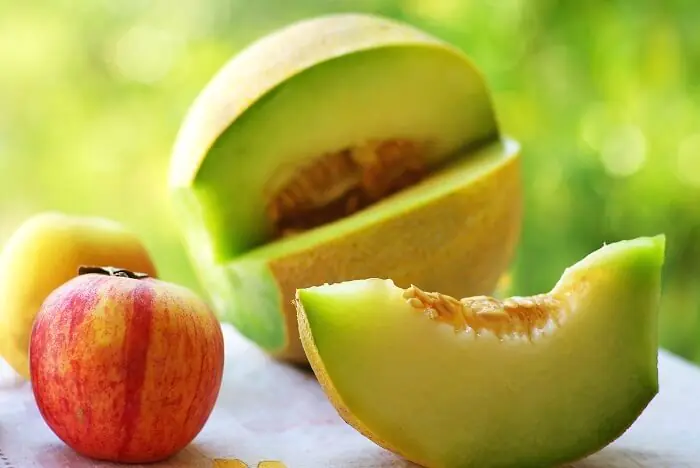
Include fermented milk products, butter, seaweed, sesame seeds, black beans in your diet; remember that the key to health is a balanced diet; maintain the required daily ratio of fats, proteins and carbohydrates, vitamins and minerals.
Modern cosmetology
Mesotherapy is an injection technique that allows you to deliver vitamins, microelements and growth factors of plant origin directly to the hair follicles. In the arsenal of cosmetologists and trichologists, there is a large selection of mesotherapy drugs that, when used in a course, can solve various hair and scalp problems, in particular, they are effective in the treatment of gray hair.
For this purpose, cobalt injections are performed, and platinum hair becomes much smaller.
Folk remedies
If you do not want to resort to using chemical dyes, you can use folk recipes that will help level out existing gray hair, give your hair a beautiful shade and prevent further graying.
Recipes based on black tea work well. They have a coloring effect and are suitable as a skincare procedure.
Balm-rinse: Application: after each hair wash.
- 4-6 tbsp. long tea per 1 liter of boiling water
- 2-3 tbsp. apple cider vinegar
Cover the vessel with tea leaves filled with boiling water and let it cool until it cools completely. Pass the cooled liquid through a sieve and warm it up a little. Then pour the infusion into a wide bowl, over which it will be convenient to rinse your hair, and add apple cider vinegar there. Leaning over the container, do at least 15-30 rinses using a bowl. After this, the hair should be wrung out without getting wet with a towel and allowed to dry naturally. Attention: The rinse is not recommended for use on hair that has been freshly dyed with chemical dyes.
Tea based mask: application - once every 2-3 weeks.
- 4 tbsp. black long tea
- ¼ glass of water
- 2 tbsp. cocoa
The composition is poured into a pan, put on fire, and the pan is covered with a lid. You need to simmer the liquid on low heat for 30-40 minutes. Strain the resulting pulp through cheesecloth and finely chop until thick. Take gruel depending on the length of your hair, mix and add cocoa powder. If, when kneading the gruel, it turns out to be too dry, you can add a little boiled water, or the remaining water drained from the pan, or a little warmed red wine (wine will give a reddish tint to the hair).
The mask should be applied to clean, dried hair in the same way as dye: in rows, carefully from the root, spreading over the entire length of the hair. Then wrap your hair in a bun, cover with a plastic cap and a bath towel on top. The exposure time of the mask is from 1 to 3 hours, depending on the desired shade. After time, the mask is washed off, the hair is easily blotted with a towel and allowed to dry naturally. Attention: You need to wear gloves to apply the mask to avoid staining the skin of your hands. It is better to test the mask on a separate strand selected from below to see how exactly your hair will react to the natural dye.
Balance your diet, take vitamins, try to avoid stress, and gray hair will not touch your hair for many years.
For an accurate diagnosis, contact a specialist.



